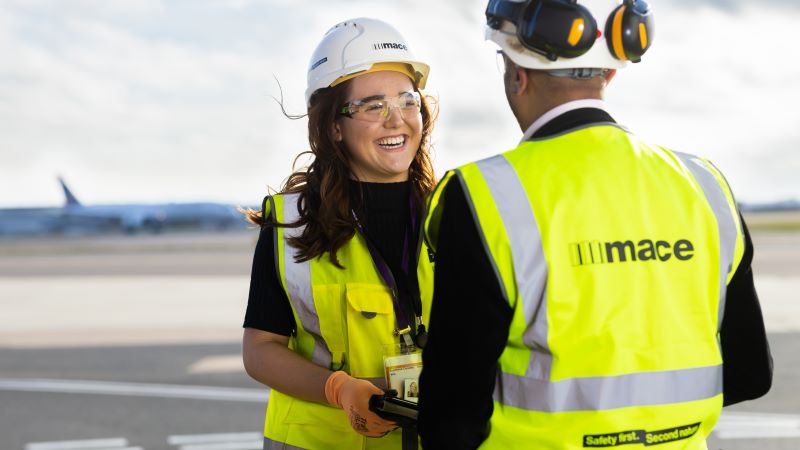Australia's infrastructure challenge: a blueprint for delivery
How do you modernise the construction sector culture? How can we get more certainty on the cost of major infrastructure? What does a well-defined and established project delivery framework look like?
These were some of the questions raised at Mace’s virtual roundtable, which brought a group of industry experts together to discuss the opportunities and challenges in delivering on Australia's ‘shovel worthy’ infrastructure programmes.
With governments pumping large investments into infrastructure, the pipeline in many countries around the world is growing. And so are the questions around how the projects will be delivered.
We know that there is evidence of a global challenges in project planning and successful delivery of infrastructure projects. Research shows that 80% of large infrastructure projects around the world are completed either late or over budget, or under deliver on the benefits they promised. Meanwhile, figures not factoring in Covid-driven investment in the sector show that Australia is expected to spend US$96bn, annually, on infrastructure, by 2030.
Broadly speaking this type of investment has the support of the people, who recognise that it provides a foundation for economic growth and improvements to everyday life. So, we know that the investment is there, and that it has public support. But how do we tackle the schemes? From our discussion with local industry leaders, it’s clear that much can be said about issues around budget, collaboration and risk.
‘Getting the numbers right’
Ultimately, infrastructure success should be measured on long-term value to society, which can be achieved quicker if programmes are delivered on time. Budgets can be a considerable barrier for effective delivery. Most major infrastructure projects are planned under political and media scrutiny. There is pressure on project promoters to provide precise estimates on cost and delivery times, which can be both unrealistic and counterproductive. In bidding for work, the construction industry must respond to a flawed procurement process, created around output rather than outcomes, causing disruption to delivery timelines and quality. What’s the solution to avoid having to go back to the drawing board for budgetary adjustments once the project is underway? On any major programme, spending the time up front to identify a scope of figures, and implementing baseline reports with details around contingency, creates robust budgets with the right numbers.
Collaboration…and trust
A lack of collaboration is another challenge. Mace data shows that 80% of organisations talk about collaboration but only 20% do it. How do we change that culture? There is a perception that effective collaboration is often born last-minute in a moment of crisis. When the chips are down, people put their differences aside and sing from the same hymn sheet. This is where leadership makes a difference. Strong, visionary leaders can foster collaboration from the outset, and implement open and honest two-way communication between the client and contractor to build trust. It’s evident that by acting as an integrator, we are moving the dial in many parts of the world and unlocking the best in local contractors through outcome-focused collaboration.
Reducing risk
Australia is facing an unprecedented pipeline of projects and a lack of transparency around pipeline which puts tremendous pressure on capacity. How can we de-risk them? Infrastructure owners and governments need to take a more constructive approach when trying to pass risk down the supply chain. Given the challenge of fixed budgets and the capacity-constraints, we should adopt a brave new model of incentivised contracting where the focus is on outcomes right at the beginning of a scheme. Any project with a clearly and coherent stated outcome is much more likely to succeed. This approach will allow for the forward pipeline to be married up, and for the sequencing around long-term vision impacts.
What about innovation?
To ensure that we build our future infrastructure more effectively, at pace, at scale and with reduced carbon emissions, our industry needs to embrace innovative solutions and take them to the next level. That being said, innovation means different things to different people. For the purpose of improving infrastructure delivery in Australia, we must understand early on what it means to each client. Do we innovate for time, cost or quality? Another interesting dimension to consider is the impact that pipeline size might have on the drive to innovate. Is there perhaps an inverse relationship between an abundance of work and the desire to push boundaries for increased productivity? While the answer to that question might come down to mindset, it’s clear that a drive for greater investment and spend early on drives innovation across the project lifecycle.
These are merely snapshots of an interesting conversation around improved infrastructure delivery that continues not just in Australia but on major projects and programmes all around the world. By drawing on local insight and lessons from global best practice, we collectively help to move the needle for the benefit of clients, projects and the taxpayers who fund them.
The data referenced in this piece can be found in Mace’s insights report, A Blueprint for Modern Infrastructure Delivery, which is available for download here.












